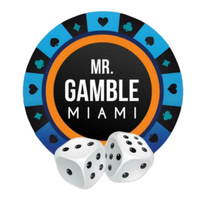Playing cards have been captivating hearts and minds for centuries, serving as the foundation for countless games, from the strategic depths of poker to the family fun of Go Fish. Yet, for many, the intricacies of the 52-card deck remain shrouded in mystery. In this comprehensive guide, we’ll answer some of the most frequently asked questions about playing cards, shedding light on their types, divisions, faces, and order.
What are the 4 types of cards in playing cards?
When you hold a standard deck of playing cards, you’re holding a collection of four distinct types, each carrying its own significance in various games and traditions.
-
Hearts: As one of the four suits in a deck, hearts are often associated with emotions, love, and passion. In games like Hearts or Spades, this suit typically carries particular strategic importance, as players aim to avoid collecting hearts or, conversely, try to gather them in certain circumstances.
-
Diamonds: Representing wealth, prosperity, and material possessions, diamonds are another suit found in standard decks. In games like Bridge or Poker, diamonds may hold value as part of a winning hand or play a role in determining the trump suit.
-
Clubs: Often depicted as clovers or trefoils, clubs symbolize growth, luck, and fertility. In games like Bridge or Euchre, clubs may be designated as the trump suit, granting them special significance during gameplay.
-
Spades: With their distinctive shape resembling a pointed shovel or spearhead, spades are associated with intellect, labor, and conflict. In games such as Spades or Bridge, spades can serve as the trump suit or carry penalties, depending on the rules in play.
How are 52 cards divided?
The 52 cards in a standard deck are divided into four suits, as mentioned above, each containing 13 cards. These suits are further categorized into two colors: red (hearts and diamonds) and black (clubs and spades). Additionally, each suit comprises cards numbered from 2 to 10, along with three face cards: the Jack, Queen, and King. Finally, there is the Ace, which holds a unique position as both the lowest and highest ranked card in many games.
What are the 4 faces of playing cards?
While the numerical cards (2 through 10) feature representations of their respective numbers, the face cards add an extra layer of visual intrigue to the deck. In a standard deck, you’ll find four face cards per suit, each with its own distinctive design and significance:
-
Jack: Often depicted as a young, dashing figure, the Jack represents a lower nobleman or courtier. In some games, the Jack holds a middling value, while in others, it may serve as a powerful card, outranking some numerical cards.
-
Queen: The Queen exudes regal elegance and grace, symbolizing femininity and authority. Like the Jack, the Queen’s value varies from game to game but generally ranks higher than the Jack and lower than the King.
-
King: As the ruler of the court cards, the King epitomizes power, leadership, and authority. In many games, the King holds the highest value among the face cards, often serving as the ultimate trump card or the key to victory.
-
Ace: The Ace is the wildcard of the deck, capable of holding the lowest or highest value depending on the game's rules. Its duality makes it a versatile and sought-after card in many games, often representing the pinnacle of success or the starting point of a winning hand.
What are all the playing cards in order?
To provide a comprehensive list, here are all the playing cards in a standard deck, listed in order within each suit:
Hearts: Ace, 2, 3, 4, 5, 6, 7, 8, 9, 10, Jack, Queen, King Diamonds: Ace, 2, 3, 4, 5, 6, 7, 8, 9, 10, Jack, Queen, King Clubs: Ace, 2, 3, 4, 5, 6, 7, 8, 9, 10, Jack, Queen, King Spades: Ace, 2, 3, 4, 5, 6, 7, 8, 9, 10, Jack, Queen, King
Conclusion: Playing cards are not merely tools for games but vessels of symbolism, tradition, and strategy. Understanding the four types of cards, their divisions, faces, and order lays the foundation for mastering countless games and appreciating the rich cultural heritage woven into each deck. Whether you’re shuffling cards for a friendly game with family or competing in high-stakes tournaments, the allure of playing cards transcends generations, inviting us to explore their secrets and unlock the mysteries they hold.




